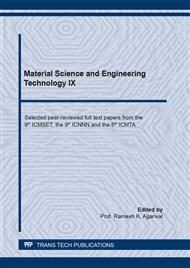p.45
p.53
p.61
p.69
p.75
p.83
p.91
p.97
p.103
Enhancement of the Compressive Strength of 3D-Printed Polylactic Acid(PLA) by Controlling Internal Pattern
Abstract:
Cost-efficient 3D-printing can create a lot of new opportunities in engineering as it enables rapid prototyping of models and functional parts. In the present study, Polylactic acid (PLA) cubic specimens with different types of infill patterns (IPs), rectilinear, grid and cuboid, were additively manufactured by Fused Filament Fabrication 3D-printing. The PLA cubes are fabricated with one perimeter and different IPs density (10, 20, and 30%). Subsequently, the compressive strengths of the PLA materials were measured in two loading directions, i.e., the layers building direction is parallel (PD) to the loading axis and perpendicular (ND) to the loading direction. An optical microscope was used to examine the deformed IPs in both loading directions. The compressive flow stress curves of the PLA cubes infilled with rectilinear and grid patterns exhibited strong fluctuations with lower compressive strengths in the loading direction along ND. The PLA with 30% grid IP revealed a superior strength of ~12 kN in the loading direction along PD. On the contrary, the same material exhibited a worst compressive strength 3 kN along ND.
Info:
Periodical:
Pages:
75-81
Citation:
Online since:
March 2021
Authors:
Price:
Сopyright:
© 2021 Trans Tech Publications Ltd. All Rights Reserved
Share:
Citation:


